
This video offers some advice on using notecards during the types of speeches often given in public speaking classes.
- Subject:
- Business and Communication
- Communication
- Material Type:
- Lecture
- Author:
- Ryan Guy
- Date Added:
- 06/02/2022

This video offers some advice on using notecards during the types of speeches often given in public speaking classes.
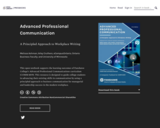
A Principled Approach to Workplace Writing
Short Description:
This open textbook supports the learning outcomes of Fanshawe College’s Advanced Professional Communications curriculum (COMM 6019). This resource is designed to guide college students in advancing their existing skills in communication by using a principled approach to business communication for managerial and leadership success in the modern workplace.
Long Description:
This open textbook supports the learning outcomes of Fanshawe College’s Advanced Professional Communications curriculum (COMM 6019). Organized in five major units— Foundational Principles of Business Messaging, The Principles of Business Style, Format, and Composition, The Principles of Social, Cultural and Employment Communication, The Principles of Report and Research Writing, and The Principles of Visual, Verbal and Group Communication—this educational resource is conveniently presented in a variety of AODA-compliant formats and written in a reader-friendly style. This textbook helps ensure that students graduate with the advanced communication skills necessary to succeed in the modern workplace from a managerial and leadership perspective.
Word Count: 277283
(Note: This resource's metadata has been created automatically by reformatting and/or combining the information that the author initially provided as part of a bulk import process.)

This module offers a communication studies perspective on anti-racism.Students who complete this module will 1) Think about how we ought to talk about race. 2) Learn about the social construction of race. 3) Listen to conversations about race. 4) Take part in conversations about race.[Title page image description: White, stenciled letters against a black background that appears to be smeared with white paint read, "STOP RACISM."]
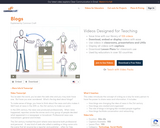
A short introduction to blogs - how they work and why they matter.
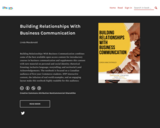
Short Description:
Building Relationships With Business Communication combines some of the best available open access content for introductory courses in business communication and supplements this content with new material on personal and social identity; rhetorical listening; inclusive language; storytelling; and territorial Land Acknowledgements. The textbook is focused on a Canadian audience of first-year Commerce students. H5P interactive content, the infusion of real world examples, and an engaging layout make this textbook highly readable for this audience. INSTRUCTORS: If you adopt Building Relationships with Business Communication in part or in whole, as a core or supplemental resource, please report your adoption to https://forms.office.com/r/MDgAuHisSP. Thank you!
Long Description:
Building Relationships With Business Communication is aimed at first-year students of Commerce. The book presents material from Business Communication for Success [Author removed at request of original publisher]; Web Literacy for Student Fact-Checkers by Mike Caulfield; Business Presentation Skills by Lucinda Atwood and Christian Westin; Professional Communications by Jordan Smith, Melissa Ashman, eCampusOntario, Brian Dunphy, Andrew Stracuzzi; and APA Style Citation Tutorial by Sarah Adams and Debbie Feisst. This material is supplemented with new material on personal and social identity; rhetorical listening; inclusive language; storytelling; and territorial Land Acknowledgments. The principles of justice, equity, diversity, and inclusion are woven throughout the textbook. Interactive H5P content enhances the student experience.
Part I includes chapters on developing business relationships. The first two chapters explain the importance of effective business communication and the responsibilities the students will have as business communicators. Next, students consider the ways in which the communication context, the purpose of the message, the audience for the communication, and the channel of communication impact their writing or presenting strategy. The final chapter of Part 1 considers the importance of inclusive language in developing and maintaining business relationships.
Part 2 presents tools for effective communication and primarily focuses on rhetoric. Rhetorical listening and visual rhetoric are often overlooked elements of persuasion. These strategies are discussed as well as the classical rhetorical strategies of logos, ethos, and pathos.
Part 3 focuses on preparing and delivering business presentations. This section addresses speech anxiety, ways to alleviate this anxiety through clear presentation structures, and the importance of storytelling in engaging an audience.
Part 4 concerns written forms of communication including email, memos, letters, and reports. Techniques to develop and maintain a positive audience relationship are addressed throughout. An additional resource on APA Style referencing is provided in Part 5.
INSTRUCTORS: If you adopt Building Relationships with Business Communication in part or in whole, as a core or supplemental resource, please report your adoption to https://forms.office.com/r/MDgAuHisSP. Thank you!
Word Count: 72357
ISBN: 978-1-7781696-5-6
(Note: This resource's metadata has been created automatically by reformatting and/or combining the information that the author initially provided as part of a bulk import process.)
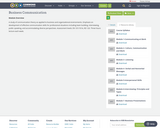
A study of communication theory as applied to business and organizational environments. Emphasis on development of effective communication skills for professional situations including team building, interviewing, public speaking, and accommodating diverse perspectives. Assessment levels: EN 101/101A, RD 120. Three hours lecture each week.
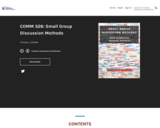
Word Count: 58957
(Note: This resource's metadata has been created automatically by reformatting and/or combining the information that the author initially provided as part of a bulk import process.)
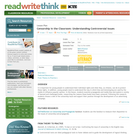
Students examine propaganda and media bias, research a variety of banned and challenged books, choose a side of the censorship issue, and support their position through an advertising campaign.

College Success takes a fresh look at what it means, in today’s world, with today’s students, to be successful in college.Although many of the topics included—from study skills to personal health, from test-taking to managing time and money—will look familiar to those who have used student success texts that have been around for many editions, College Success takes a new approach. The focus is on realistic, practical tools for the students who need them. This is a book designed, frankly, for students who may have difficulty with traditional college texts. The style is direct and to the point. Information is presented concisely and as simply as possible. This is not a weighty tome that discusses student success—this is a manual for doing it.College student demographics have changed considerably in recent decades. More than a third of all students enroll not directly from high school but after a delay of some years. More students are working and have families. More students come from varied ethnic and cultural backgrounds. More students are the first in their family to attend college. More students have grown up with electronic media and now read and think in ways different from the previous generation. With these and so many other cultural changes, more students are not well prepared for a college education with the study skills and life skills they need to become successful students.For each student to get the most out of College Success and their college experience they must understand who they are as it relates to college. To that end, in every chapter students explore themselves, because success starts with recognizing your own strengths and weaknesses. Students make their own goals based on this self-assessment, determining what success in college really means for them as individuals. Interactive activities then help students learn the choices available to them and the possibilities for improving their skills. Skills are presented in step-by-step processes, tips for success in manageable highlighted displays. Most important, students always see the value of what they are reading—and how they can begin to apply it immediately in their own lives.College Success is intended for use in Freshmen Orientation, Study Skills or Student Success courses. A 2009 study revealed that currently nationwide, 34% of college freshmen do not return to their college for their sophomore year. This book is designed to help change that.

Many resources online provide limited lists of available communication channels, but the lists miss relevant details for those learning about the range of ways we can communicate. This introductory reading intends to share the sheer volume of ways we can communicate with audiences and publics to illustrate the need to strategically consider all the options we may use to share our messages.
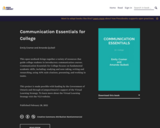
Short Description:
This open textbook brings together a variety of resources that guide college students in introductory communication courses. Communication Essentials for College focuses on fundamental academic skills, including: studying and note taking, writing and researching, using APA style citations, presenting, and working in teams. NewParaThis project is made possible with funding by the Government of Ontario and through eCampusOntario’s support of the Virtual Learning Strategy. To learn more about the Virtual Learning Strategy visit the VLS website.NewParaPublished February 28, 2022
Word Count: 171460
(Note: This resource's metadata has been created automatically by reformatting and/or combining the information that the author initially provided as part of a bulk import process.)
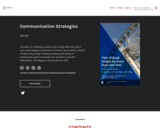
Short Description:
Strategies for thinking critically and writing effectively about topics that engage practitioners in Forestry, particularly in Wood Products Processing. Planning, drafting and editing of professional-quality documents for specialists and other stakeholders. Developing oral presentation skills.
Long Description:
Lorem ipsum dolor sit amet, consectetur adipiscing elit, sed do eiusmod tempor incididunt ut labore et dolore magna aliqua. Ut enim ad minim veniam, quis nostrud exercitation ullamco laboris nisi ut aliquip ex ea commodo consequat. Duis aute irure dolor in reprehenderit in voluptate velit esse cillum dolore eu fugiat nulla pariatur. Excepteur sint occaecat cupidatat non proident, sunt in culpa qui officia deserunt mollit anim id est laborum
Word Count: 4905
Included H5P activities: 4
ISBN: XXX-X-XXXXXX-XX-X
(Note: This resource's metadata has been created automatically by reformatting and/or combining the information that the author initially provided as part of a bulk import process.)
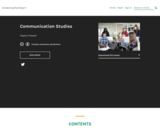
Word Count: 222741
(Note: This resource's metadata has been created automatically by reformatting and/or combining the information that the author initially provided as part of a bulk import process.)
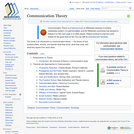
This book is an introduction to communication theory — the theory of how humans share, encode, and decode what they know, what they need, and what they expect from each other.

Word Count: 11592
ISBN: 978-1-998755-67-7
(Note: This resource's metadata has been created automatically by reformatting and/or combining the information that the author initially provided as part of a bulk import process.)

Canadian Edition (2020) Adapted from A College-to-Career Guide to Success (2019) Partially Adapted from Business Communication for Success (2015)
Short Description:
This open educational resource is designed to guide first-year college students in developing the vital communication skills that will help with the real, everyday tasks of writing and speaking in their chosen profession. Organized in three major units—Communication Fundamentals, Applied Writing, and Oral Communication—the textbook is conveniently presented in a variety of AODA-compliant formats and written in the reader-friendly style of a professional email between colleagues. The textbook helps ensure that students graduate with the communication skills necessary to succeed in the modern workplace. This version was revised for Personal Support Workers
Word Count: 194888
(Note: This resource's metadata has been created automatically by reformatting and/or combining the information that the author initially provided as part of a bulk import process.)

Short Description:
This text is in use at James Madison University for students enrolled in SCOM 121/122/123. It also the text in use at Blue Ridge Community College for students enrolled in CST 110.
Word Count: 119183
(Note: This resource's metadata has been created automatically by reformatting and/or combining the information that the author initially provided as part of a bulk import process.)
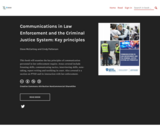
Short Description:
This book will examine the key principles of communication personnel in law enforcement require. Areas covered include listening skills, communicating tactics, interviewing skills, note-taking, report writing and testifying in court. Also covered is a section on PTSD and its interaction with law enforcement.
Word Count: 66101
(Note: This resource's metadata has been created automatically by reformatting and/or combining the information that the author initially provided as part of a bulk import process.)

The introduction of Business Communication for Success, the textbook used throughout this course, notes that Ň[E]ffective communication takes preparation, practice, and persistence. There are many ways to learn communication skills; the school of experience, or Ôhard knocks,Ő is one of them. But in the business environment, a ÔknockŐ (or lesson learned) may come at the expense of your credibility through a blown presentation to a client.Ó Effective communication skills are a prerequisite for succeeding in business. Communication tools and activities connect people within and beyond the organization in order to establish the businessŐs place in the corporate community and the social community, and as a result, that communication needs to be consistent, effective, and customized for the business to prosper. Business Communication for Success provides theories and practical information that represent the heart of this course, while additional resources are included to expand or pose alternatives to the approaches chosen in the textbook. You will receive maximum benefits from this course if you complete the readings first and then use the additional resources to fill in the blanks and/or reconsider the topics in the textbook.

Word Count: 222501
(Note: This resource's metadata has been created automatically by reformatting and/or combining the information that the author initially provided as part of a bulk import process.)